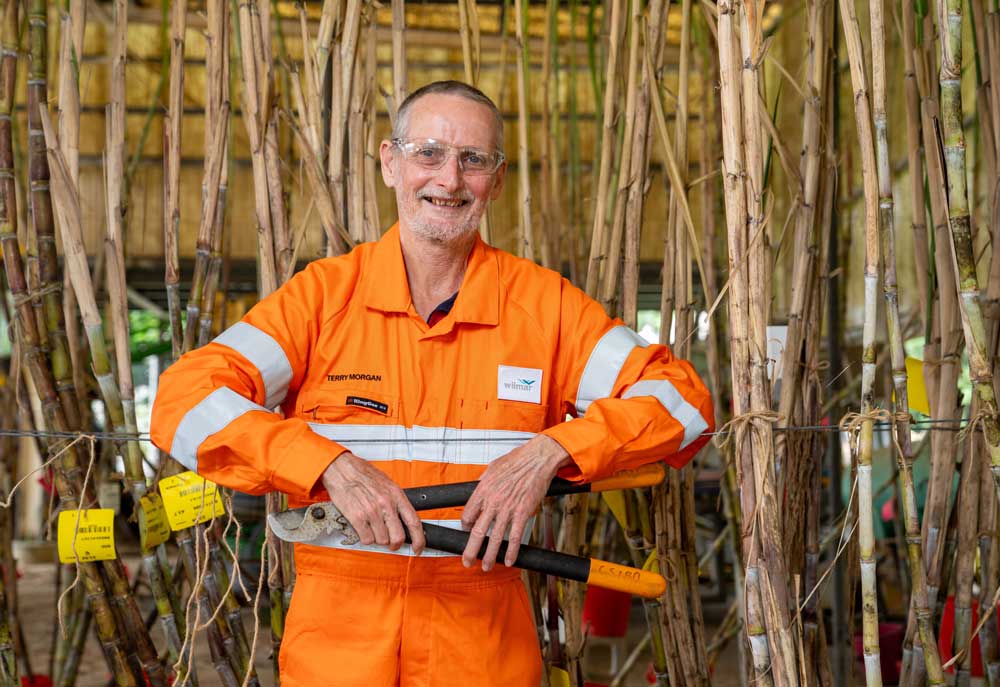Under the canopy of the honeymoon suite, a new breed of sugarcane is created.
 Terry Morgan is a matchmaker for sugarcane parents to create new breeds.Just like humans, new cane varieties are created from a male and female parent. They are placed together and left alone in a honeymoon suite, where new varieties of sugarcane are conceived.
Terry Morgan is a matchmaker for sugarcane parents to create new breeds.Just like humans, new cane varieties are created from a male and female parent. They are placed together and left alone in a honeymoon suite, where new varieties of sugarcane are conceived.
Manager Technical Field Department Terry Morgan is a matchmaker for the parent canes and said genomic technologies could be used to measure how distantly the parents were related.
“We need to make sure the parents don’t have parents that are siblings, or worse, as inbreeding can cause problems over time,” he said.
“Kind of like royalty, they need to bring in a new person or they all have issues.”
If they have good breeding values and are distantly related, they become a priority to be crossed, or married.
Just like any marriage, in order to be successful, both parties have to be ready for the commitment. This is not always the case with cane parents.
“In order to make the cross, both parents need to be ready, meaning arrowing or flowering needs to be synchronised,” Terry said.
“So timing can get a bit tricky.”
Terry said cane parents had a two-week honeymoon at the crossing shed in Macknade, during which they were placed together under a cloth lantern to make new varieties.
They are put under the cloth lanterns– or honeymoon suite – to avoid any cross-pollination from nearby flowering cane.
“Unfortunately for the males, they are discarded at the end of the honeymoon period, having served their purpose,” he said.
“The ladies are moved on to the ripening racks (or maternity ward) where they spend another two-and-a-half weeks in a preserving solution.
“During this time, the seed grows, forms and ripens, before we harvest the flower from the stalk.”
The new genomic technology allows new parents to be identified within one year from when a seedling is planted.
“Once they’ve grown, we can take samples and identify which seedlings should be selected into the parent collection.”
In the past 30 years, Terry and the team at the Technical Field Department have supported the birth of three major varieties from Wilmar’s breeding program. Two current varieties – KQ228 and WSRA17 - are stronger for cane yield and now make up 10 per cent of the Australian sugarcane industry.


